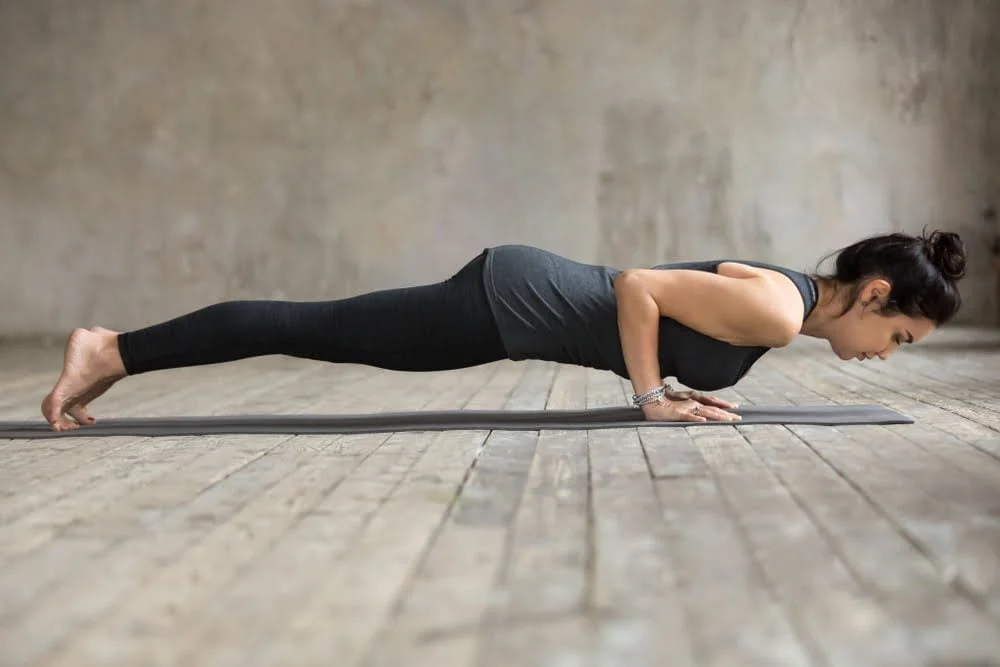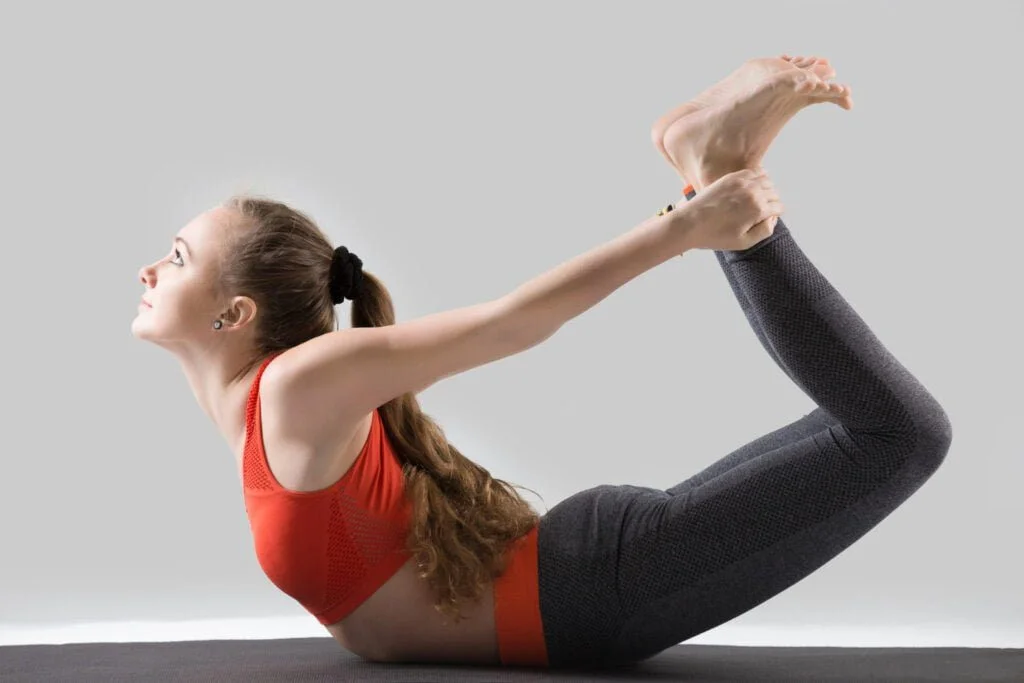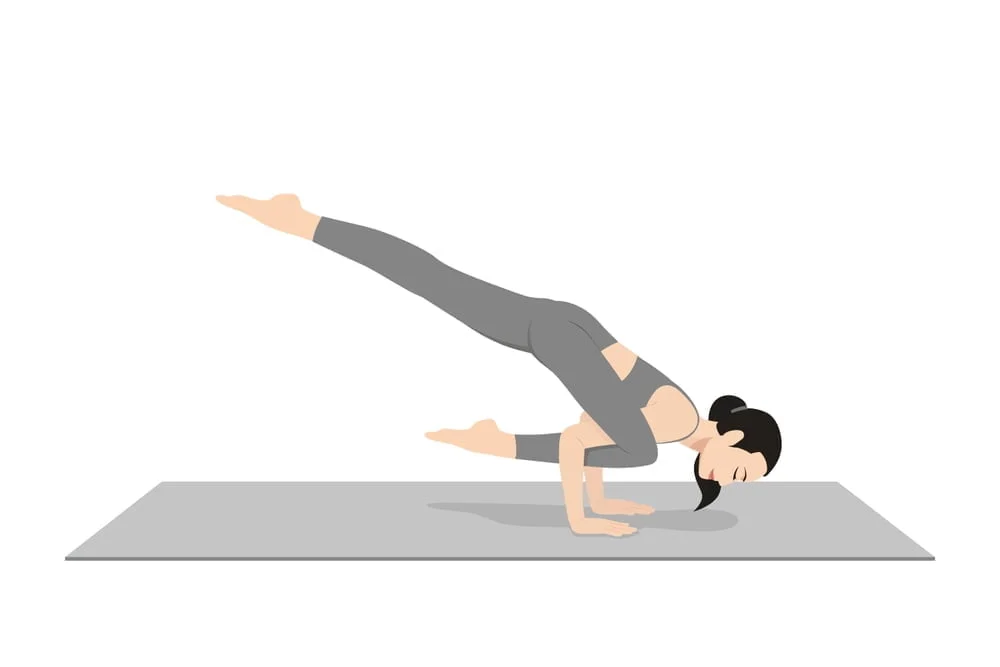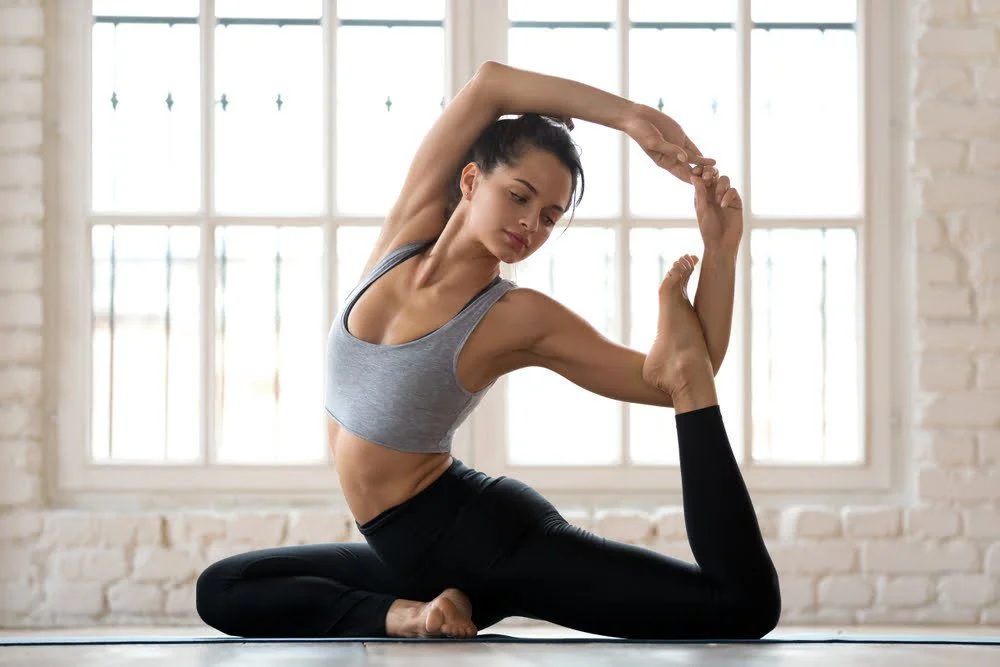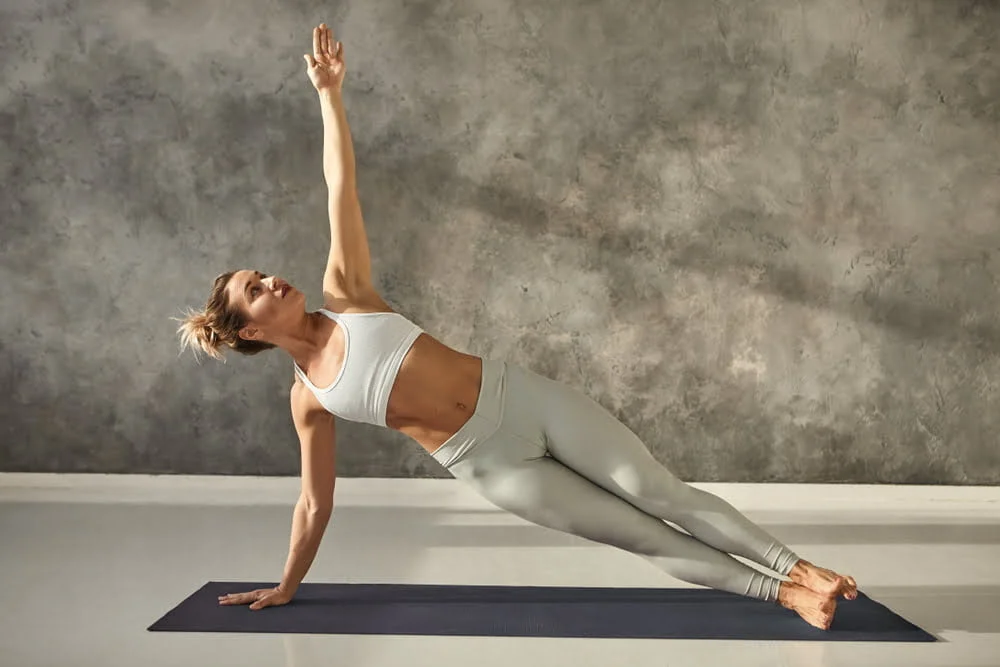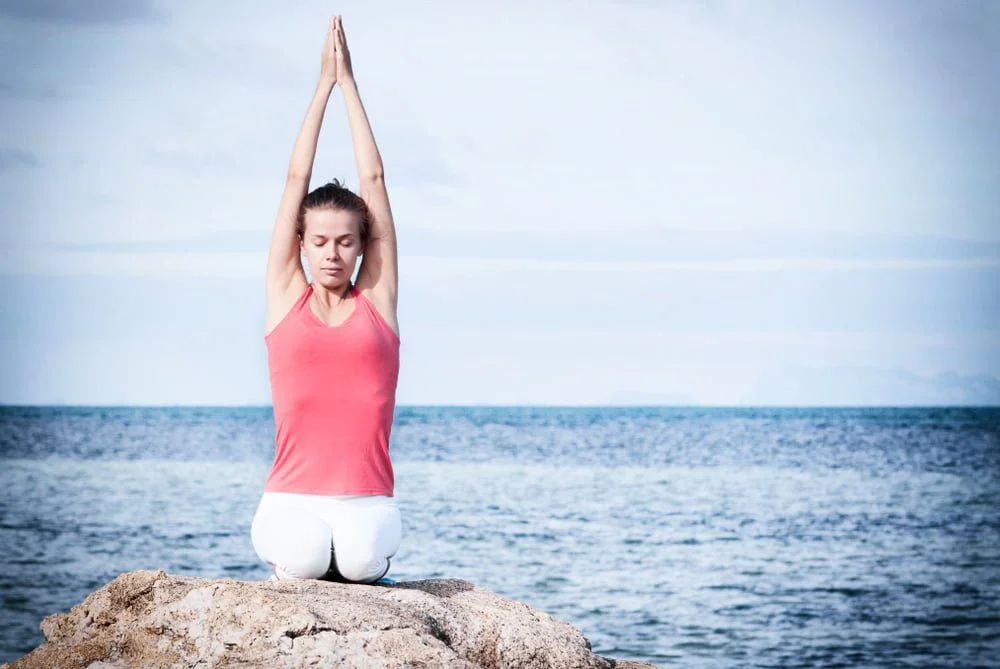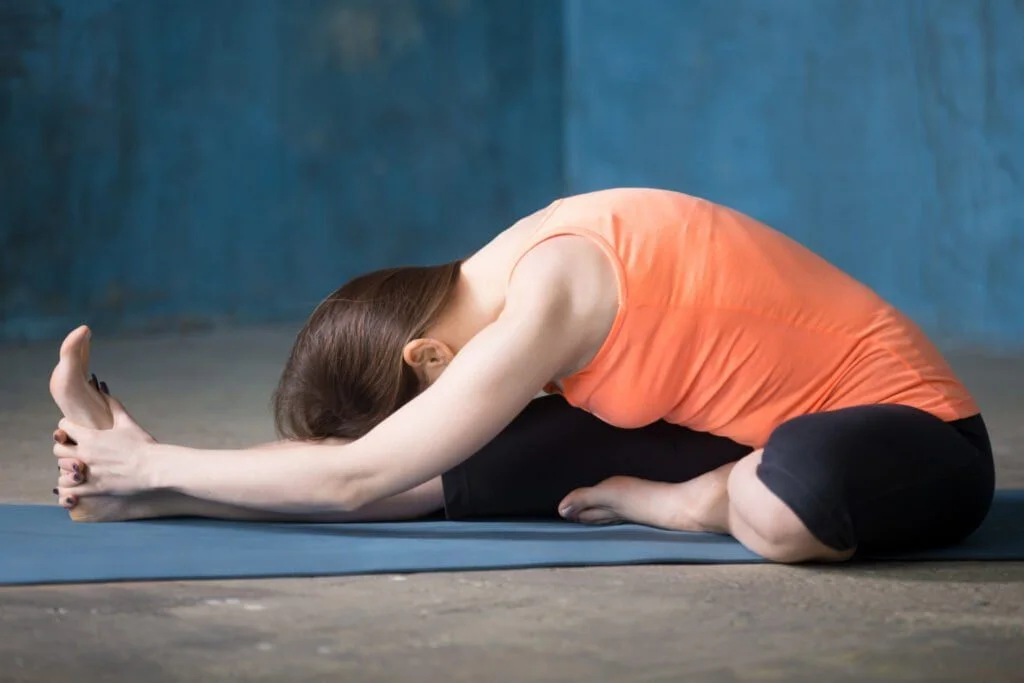Yoga Push Up, also known as Chaturanga Dandasana, is a challenging yet highly effective exercise that combines the principles of yoga and strength training. It is a variation of the traditional push-up that not only strengthens the upper body but also engages the core muscles and enhances overall stability and flexibility.
This exercise offers numerous benefits, such as building strength in the arms, shoulders, chest, and core, improving posture, and increasing body awareness. In this article, we will explore the correct technique to perform a Yoga Push Up, discuss its benefits, and provide additional tips to maximize your practice.
Whether you are a yoga enthusiast or someone looking to add diversity to your workout routine, incorporating Yoga Push Ups into your fitness regimen can be a game-changer for your physical and mental well-being.
Yoga push up muscles worked.
– Chest muscles (pectoralis major and minor).
– Shoulder muscles (deltoids).
– Triceps muscles (triceps brachii).
– Core muscles (abdominals and obliques).
– Back muscles (latissimus dorsi and rhomboids).
– Leg muscles (quadriceps and hamstrings, to stabilize the body).
benefits of Yoga Push Up.
There are numerous benefits associated with practicing Yoga Push Up, also known as Chaturanga Dandasana. This particular exercise is an essential component of yoga and offers a wide range of advantages for both physical and mental well-being.
1. Strengthens the upper body.
Yoga Push Up primarily targets the muscles in the arms, shoulders, chest, and core. Regular practice of this exercise helps to build strength and definition in these areas, leading to improved overall upper body strength.
2. Builds core stability.
By engaging the abdominal muscles during Yoga Push Up, individuals can develop a strong and stable core. This not only enhances physical performance but also helps to protect the back and improve posture.
3. Enhances body awareness.
Yoga Push Up requires focus and concentration, as it involves synchronizing breath with movement. This heightened body awareness can lead to improved coordination, balance, and proprioception.
4. Increases flexibility.
During the execution of Yoga Push Up, various muscle groups, including the hamstrings, hip flexors, and chest, are stretched. Regular practice can gradually increase flexibility in these areas, allowing for greater range of motion in other physical activities.
5. Stimulates cardiovascular health.
Yoga Push Up is an intense exercise that raises the heart rate, thereby providing cardiovascular benefits. This increased heart rate helps to improve blood circulation, strengthen the cardiovascular system, and boost overall heart health.
6. Promotes weight management.
As Yoga Push Up is a full-body exercise, it burns calories and contributes to weight management. Combined with a healthy diet, regular practice of this exercise can aid in weight loss or weight maintenance.
7. Relieves stress and anxiety.
Engaging in Yoga Push Up helps promote mental relaxation and reduce stress. The focus on breathing, combined with the physical exertion, can help release endorphins and alleviate symptoms of anxiety and depression.
8. Improves posture.
Yoga Push Up strengthens the muscles responsible for maintaining good posture, such as the back, core, and shoulders. Regular practice can gradually correct poor posture, leading to improved spinal alignment and reduced risk of developing musculoskeletal issues.
9. Enhances body confidence.
As Yoga Push Up builds strength and flexibility, individuals may experience an increase in body confidence and self-esteem. This exercise allows individuals to witness their progress over time, leading to a positive body image and improved self-perception.
10. Boosts overall well-being.
The combination of physical and mental benefits offered by Yoga Push Up contributes to an overall sense of well-being. Regular practice can leave individuals feeling more energized, focused, and in tune with their bodies, leading to a happier and healthier lifestyle.
Incorporating Yoga Push Up into a regular exercise routine can provide these numerous benefits, making it an ideal addition for individuals seeking to improve their physical strength, mental well-being, and overall health.
How to do Yoga Push Up?
Yoga push ups, also known as chaturanga dandasana, are a challenging yet effective exercise that targets the upper body, core, and glutes. To perform this pose correctly and safely, follow the steps below:
1. Start by positioning yourself in a high plank position, with your hands firmly planted on the ground shoulder-width apart and your legs extended behind you. Ensure that your body forms a straight line from your head to your heels.
2. Engage your core muscles by drawing your navel towards your spine. This will help stabilize your torso throughout the exercise.
3. As you exhale, begin to lower your body towards the ground by bending your elbows. Keep your elbows tucked close to your sides, pointing backward rather than flaring out to the sides.
4. Continue to lower your body until your upper arms are parallel to the floor, forming a 90-degree angle with your elbows. At this point, your body should be hovering a few inches above the ground.
5. While maintaining control, inhale and push through your hands to straighten your arms, returning to the starting position. As you do this, make sure to keep your body aligned and avoid sagging in your lower back.
6. Repeat this movement for the desired number of repetitions, focusing on proper form and controlled movements.
Tips:
– If you find it challenging to perform full push-ups, modify the exercise by dropping your knees to the ground while maintaining proper form with the upper body.
– Avoid overarching or sagging in your lower back by engaging your core muscles throughout the exercise.
– Focus on controlled movements rather than speed, as this will help you maintain proper form and maximize the benefits of the exercise.
– As with any exercise, listen to your body and stop if you experience any pain or discomfort.
| 💡 Tips FitToFar.com By regularly incorporating yoga push ups into your fitness routine, you can strengthen your upper body, improve core stability, and enhance overall body control. Remember to consult with a healthcare professional or certified yoga instructor before attempting any new exercise, especially if you have pre-existing medical conditions or injuries. |
Additional Tips While Performing Yoga Push Up.
1. Focus on your breath.
During yoga push-ups, it is essential to synchronize your breath with the movements. Inhale as you lower yourself down, and exhale as you push back up. This conscious breathing will help you maintain control and stability throughout the exercise.
2. Engage your core.
To enhance the effectiveness of yoga push-ups, engage your core muscles throughout the entire movement. This will not only strengthen your abs but also provide stability to your spine and prevent any strain on your lower back.
3. Maintain proper alignment.
Pay attention to your body’s alignment during yoga push-ups. Keep your wrists directly under your shoulders, and your body should form a straight line from your head to your heels. By maintaining proper alignment, you can prevent injuries and maximize the benefits of this exercise.
4. Start with modified push-ups.
If you are new to yoga push-ups or have limited upper body strength, it is advisable to begin with modified push-ups. Place your knees on the ground instead of keeping your legs straight. This modification will help you build strength gradually and avoid unnecessary strain.
5. Listen to your body.
It is crucial to listen to your body and respect its limitations. If you feel any discomfort or pain during yoga push-ups, modify the exercise or take a break. Pushing yourself too hard can lead to injuries, so always work within your comfort zone.
6. Gradually increase repetitions.
As you become more proficient in yoga push-ups, gradually increase the number of repetitions. This progressive overload will challenge your muscles and promote further strength and endurance gains.
7. Incorporate variations.
Once you have mastered the basic yoga push-up, feel free to incorporate variations to keep your practice exciting and to target different muscle groups. Experiment with wide-arm push-ups, diamond push-ups, or even decline push-ups to engage your muscles in unique ways.
8. Warm-up before practicing.
Before performing yoga push-ups or any other exercise, it is essential to warm up your body properly. This can include dynamic stretches, gentle movements, or a few minutes of cardio activity. Warming up prepares your muscles and joints for the workout, reducing the risk of injury.
9. Stay consistent.
Like any other exercise, consistency is key when it comes to yoga push-ups. Aim to practice regularly, whether it’s a few times a week or daily. Consistency will help you progress, build strength, and achieve the desired results over time.
10. Seek guidance if needed.
If you are unsure about the correct form or have any specific concerns, consider seeking guidance from a yoga instructor or fitness professional. They can provide personalized advice, correct any mistakes, and ensure that you are performing yoga push-ups safely and effectively.
Yoga push-up variations.
Yoga push-up variations refer to a set of modified push-up exercises that incorporate elements of yoga, providing a unique twist to the traditional push-up movement. These variations not only work the upper body muscles but also engage the core, improve flexibility, and promote overall body awareness and balance. By combining the strength-building benefits of push-ups with the mind-body connection of yoga, practitioners can elevate their workout routine to new heights.
1. Downward Dog Push-Up.
In this variation, the starting position resembles the downward dog pose in yoga. From a standing position, the practitioner bends forward, placing their hands on the ground shoulder-width apart. They then walk their feet back until the body forms an inverted V shape. From this position, they perform push-ups, keeping the core engaged and focusing on the elongation of the spine and stretching of the hamstrings.
2. Side Plank Push-Up.
By integrating side plank into a push-up, practitioners can enhance their core stability and strengthen the oblique muscles. In a regular push-up starting position, they transition to a side plank on one hand, extending the opposite arm towards the sky. From this position, they perform push-ups, ensuring proper alignment and engaging the core muscles on both sides of the body.
3. Upward Dog Push-Up.
Inspired by the upward dog pose in yoga, this variation emphasizes opening the chest, improving posture, and stretching the hip flexors. Starting in a high plank position, the practitioner lowers their body down while keeping the tops of their feet grounded. They then push up, extending their arms fully while drawing the shoulders back, creating a deep stretch in the front of the body.
4. Dolphin Push-Up.
This variation combines the strength-building aspects of push-ups with the benefits of dolphin pose. Beginning in a forearm plank position, the practitioner raises their hips towards the ceiling, pressing into the forearms and engaging the core. From this position, they perform push-ups, focusing on maintaining stability and control throughout the movement.
| 💡 Tips FitToFar.com Incorporating these yoga push-up variations into a regular exercise routine not only adds diversity but also enhances strength, flexibility, and body awareness. Whether aiming to challenge oneself or seeking a new way to engage both the body and mind, these variations offer a holistic approach to fitness that combines the best of yoga and push-ups. |
Alternatives of Yoga Push Up.
There are several alternatives to the traditional yoga push up that can provide similar benefits and work different muscle groups. These alternatives include:
1. Traditional Push Up.
While not specific to yoga, the regular push up is an effective alternative. It targets the chest, shoulders, triceps, and core muscles, promoting upper body strength and stability.
2. Dolphin Plank Pose.
This pose is similar to the forearm plank, but with a slight variation. It involves resting on the forearms and toes, with the body parallel to the ground. Dolphin plank targets the arms, shoulders, and core while providing stability and building upper body strength.
3. Pike Push Up.
In this variation, the starting position is similar to Downward Facing Dog pose. From there, you lower the head towards the floor by bending the elbows, engaging the shoulders, and pressing into the arms. The pike push up primarily targets the shoulders and triceps, while also engaging the core and upper back muscles.
4. Wall Push Up.
This modification is ideal for beginners or those with limited upper body strength. It involves standing a few feet away from a wall, placing your hands on the wall at shoulder height, and leaning in to perform a push up motion. Wall push ups target the chest, shoulders, and triceps while providing a supported and accessible option.
5. Knee Push Up.
Similar to the traditional push up, this variation involves keeping the knees on the ground to reduce the load on the upper body. It is a great alternative for beginners or those recovering from an injury, allowing them to gradually build strength and form. Knee push ups target the chest, shoulders, and triceps while engaging the core muscles.
| 💡 Tips FitToFar.com These alternatives to the yoga push up offer a range of options for individuals with different fitness levels, goals, or limitations. Incorporating these variations into your workout routine can help diversify your upper body strength training and provide a well-rounded approach to fitness. |
Take Away.
The Yoga Push Up is an excellent exercise that offers numerous benefits for the mind and body. By combining the strength-building elements of a traditional push up with the mindfulness and flexibility aspects of yoga, this exercise helps improve overall strength, stability, and posture.
Additionally, it promotes mental clarity, stress reduction, and increases body awareness. Whether you are a beginner or an experienced yogi, incorporating the Yoga Push Up into your fitness routine can enhance your overall well-being and contribute to a healthier lifestyle.

 Workout
Workout
 Meditation
Meditation




 Contact Us
Contact Us

